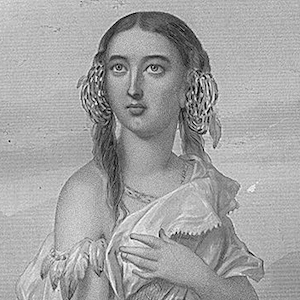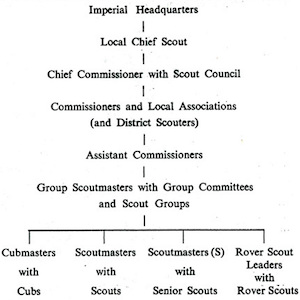Imperial/ Colonial

Carlisle Indian School Students
The photograph shows buildings and students of the Carlisle Indian Industrial School around 1900. Attended by over 12,000 Native American children from more than 140 tribes between 1879 and 1918, the school was the model for nearly 150 Indian schools. Its founder was U.S.

Pocahontas (Matoaka) 1595-1617
Pocahontas, a legendary figure in American history, was the daughter of a powerful 17th-century Powhatan chief.

Organization of British Imperial Scouting
This chart shows the official lines of authority in the imperial Boy Scout movement. In theory, the Imperial Scout Headquarters had direct control over local versions of scouting through its territorial associations.

Pathfinder Warrant
Imperial scout headquarters and the national and territorial scout associations were deeply concerned with ensuring that only respectable and responsible men became scoutmasters.

The Scout's and King's African Rifles Uniforms
The top photograph shows members of a South African scout troop specifically for blind adolescents and young men c.1950. The bottom photograph is of non-commissioned officers from the King's African Rifles in the mid-1950s.

Mau Mau Fighters in Scout Uniforms
In the early 1950s, tens of thousands of poor and landless Kikuyus revolted against the Kenyan colonial government and wealthy members of their own community who were allied with the British regime.

Captured Africans Liberated from a Slaving Vessel
The Graphic, a London periodical owned by liberal reformer William Luson Thomas, was not an abolitionist publication per se, but it did seek to inspire action against those causes that Thomas felt demanded immediate attention, such as poverty, crime, and slavery.

Slave Coffle, Central Africa, 1861
This image shows children and adults making their way from the African interior to the coast in a slave coffle. While some may think that children were given special treatment because of their age, and some may have, this image suggests that this was not always the case.

Los tres mulatos de Esmeraldas
This is a painting entitled “The Mulatto Gentlemen of Esmeraldas” from Spanish America. The painting was made in 1599 by a relatively well-known indigenous painter who was working in Quito at the time, a man named Andrés Sánchez Gallque.

Analyzing Images
The modules in Methods present case studies that demonstrate how scholars interpret different kinds of historical evidence in world history.